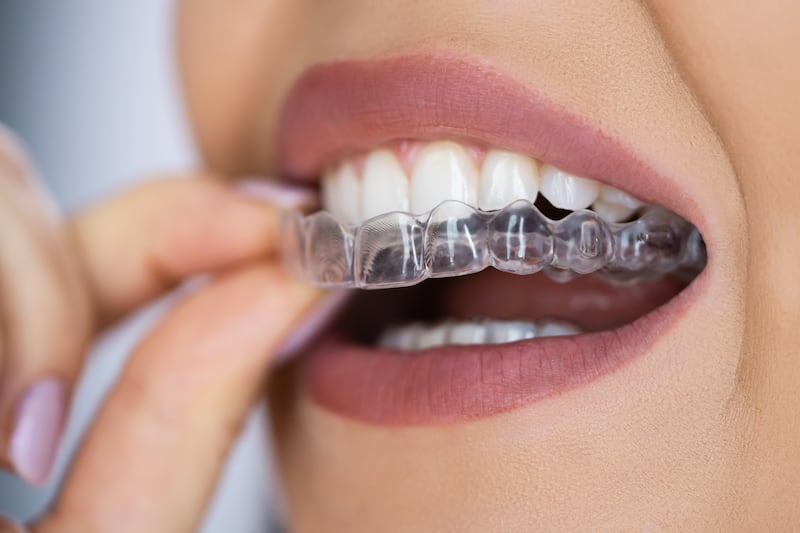“My doctor told me I had to stop throwing intimate dinners for four unless there are three other people,” declared Orson Welles. He wouldn’t require a double-blind randomised controlled trial to discover that our collective cholesterol levels are wildly spiking after the recent festive indulgences.
For the first time, I had my bloods checked and they revealed, just as I suspected, that I’m riding high on the undesirable cholesterol wave – I am indeed a thin fatty. My teenage son after learning this then inquired if I was going to have a heart attack. I nervously replied: “A long time in the future...” But really, who knows?
A wake-up call it was. Having made sure that my husband knows where the nearest defibrillator is and reminding myself to keep in his good books so that he doesn’t walk slowly to the device if things go downhill, I then started to analyse my diet.
Cholesterol is labelled as a waxy fat-like substance – the mere description has me imagining it maliciously glopping up my arteries and wickedly forming clots. At normal levels, cholesterol plays an important role in making our cell membranes, our hormones, and vitamin D.

My LDL (low-density lipoprotein) cholesterol levels are high. These are the baddies, the ones that are increasing my risk of a stroke and heart attack. The HDL (high-density lipoprotein) cholesterols are the goodies mopping up the cholesterol floating around in the bloodstream and carrying it back to the liver.
In the mouth, high cholesterol levels are associated with worse levels of gum disease. The exact link between the two isn’t clear, however. It may be down to the fact that there’s more inflammation in someone with higher cholesterol levels combined with a reduction in blood flow due to the blocked arteries, which in turn aggravates the gums.
Interestingly, for people on cholesterol-busting statins, these drugs can have a positive impact on our gums and bones. They also improve our healing capacity after having a tooth out or dental implant surgery. However, statins do tend to dry out the mouth which increases the chance of teeth decaying.
I’m in the camp of avoiding taking medications unless absolutely essential which means my personal New Year resolutions are bursting with healthier eating aspirations, - welcome 2024...

Something to smile about?
THE recent closure of the American-based company, Smile Direct Club, described as the ‘clear brace in a box company’, has wiped the smile off thousands of its customers’ faces.
The closure has come with an abandonment of the company’s Lifetime Smile guarantee and an immediate relinquishment of responsibility for the treatments that have been started. The British Orthodontic Society, BOS, suggests that, “Smile Direct Club patients who are anxious about their treatment should contact an orthodontist or dentist at the first opportunity to discuss their options. They can be assured of professional and sympathetic care as well as an understanding ear.”
Anjli Patel, BOS director of external relations, commented: “As dental professionals, we have a duty of care to our patients following treatment for a minimum of 12 months, as is right and proper. For a corporate entity to abdicate responsibility in this way is nothing short of scandalous.”
Even the term ‘lifetime smile guarantee’ is completely unrealistic. No treatment of any nature, whether medical or dental, can be guaranteed for a lifetime. The core concept of having your teeth straightened by post is misaligned with the body’s highly tuned set of biomechanical rules that must be obeyed to feel comfortable.
Even the term ‘lifetime smile guarantee’ is completely unrealistic. No treatment of any nature, whether medical or dental, can be guaranteed for a lifetime
Moving teeth into a straight position on a computer programme only partially conforms to the body’s complex principles of health - there’s much more to it. If some of the chapters on tooth health are overlooked, muscular and nerve turmoil can be unleashed making day-to-day life an abysmal unceasing battle with chronic pain.
Our jaw joints are arguably the most complex in the body as they are the only joints linked together on the left and right sides. As such, they must work together in a synchronised push-and-pull dance. This means that teeth can’t just be straightened without considering these joints.
A smile that looks good on a computer screen needs to be checked i.e. with a dentist placing their hands on the patient to meticulously check that the teeth are indeed in a balanced position in all jaw movement positions - this is impossible remotely.
When the dust settles, this closure could turn out to be advantageous for patients, as more patients will seek in-person treatment with a dentist or orthodontist, bringing much-needed logic back into healthcare.








